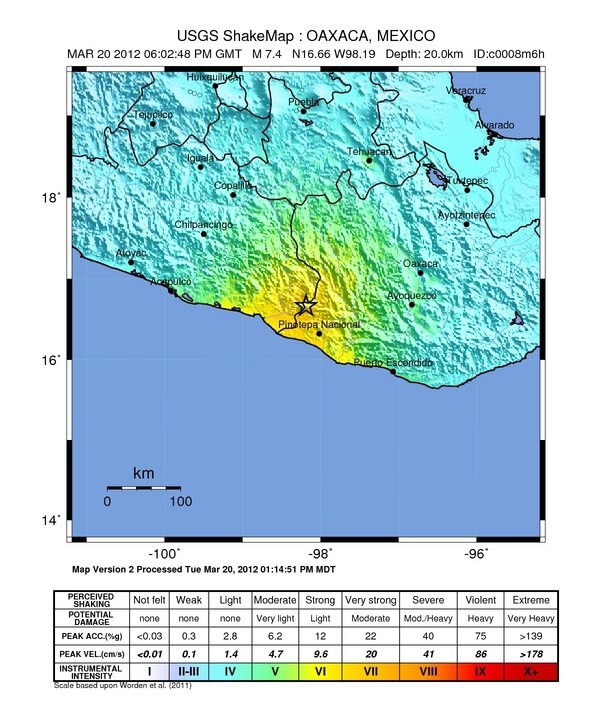
Earthquake tests 25 years of Mexican engineering
for Nature(Click here for original article)
The earthquake that hit southern Mexico on Tuesday 20 March rattled buildings and nerves in the capital, Mexico City, but thankfully caused little damage and no deaths. At magnitude 7.4 it was the strongest quake in the city since the devastating 1985 earthquake that killed 9,500 people. Tuesday’s earthquake struck just after noon, local time, on the coast, near the border between Guerrero and Oaxaca states. Seismic waves then ripped across 322 kilometres in 45 seconds to shake Mexico City. Many who felt the earthquake described it as slow and rhythmic. Lamps hanging from the ceilings in Roma — a part of the city hard hit in 1985 — spun in slow circles long after residents had poured into the streets for safety.
“I was very excited. As an engineer you get very excited when there is an earthquake,” says Sergio Alcocer, a professor of engineering and secretary general of the National Autonomous University of Mexico (UNAM) in Mexico City, who was at the city’s airport at the time. “But I was also very concerned.”
Yet this time around, there was little structural damage and no deaths. The reason, it seems, has to do with Mexico City’s unusual sensitivity to earthquakes and the efforts it has made to compensate, which could serve as a model for preparedness in the developing world.
Tuned in to quakes
“Mexico City is kind of a unique location because it gets amplification from earthquakes at quite a distance. 1985 was a classic case where we really don’t have many cases like that from around the world — Mexico City just resonates perfectly,” says David Wald, a seismologist with the US Geological Survey in Golden, Colorado.
North America’s biggest city has the unusual ability to amplify earthquakes long after the quake has dissipated. Wald compares its soils to a tuning fork, which moves at just the right speed to create a tone. In this case, the soils vibrate so as to enhance the shaking. Mexico City is built over an old lake whose central island housed the seat of the Aztec empire. Over time, the Aztecs and then the Spanish filled in the lake, creating the basis of the modern city.
No one really understood how the loose landfill would react to major earthquakes until 1985, when a magnitude-8 quake struck the coast along the same plate boundary as Tuesday’s quake. The effects were horrific, crushing hospitals, hotels and apartment buildings. Tower blocks between eight and eighteen stories high were hit especially hard. Mexico City fast became one of the best-studied earthquake zones in the world and scientists now know that buildings of these heights reacted to the particular frequency generated by the shake-amplifying landfill.
Learning the lessons
After the quake, the country changed its building regulations and pushed for better design and materials. Cement buildings, for example stood up less well than brick, so the government tightened up on which cements could be used. Buildings were buttressed with giant steel lattices and special attention was given to those in the crucial 8–20-storey range.
“Mexico City in 1985 was a wake-up call for the engineering profession,” says Alcocer. “Engineering has improved.”
Today, many seismologists see Mexico City as a model for the developing world as an earthquake-conscious city within a moderate budget. But until Tuesday, the city had yet to be tested. Although measurements at UNAM suggest that this quake was only a third as strong as the one in 1985, Alcocer says it will generate massive amounts of valuable data. Wald, however, sees it as a warning for any city located in a silty basin – few of which have the kind of data that Mexico City has gathered.
“If you made all the studies that were done post-1985 in every city in the world, you’d probably be able to figure a lot of these things out,” he says. “We don’t have the luxury of doing that everywhere. So the question I have is, what other Mexico Cities are out there? All huge population are in big basins. That’s where we build.”
- Nature
doi:10.1038/nature.2012.10291
